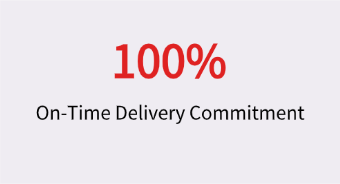The Complete Guide to Clinical Data Submissions:
CDISC Standards, TMF Compliance, and Electronic System Validation
In-depth Analysis of SDTM/ADaM Terminology, Multilingual Documentation, and ePRO/EDC Localization Strategies
Clinical data standards such as SDTM and ADaM, combined with the integrity of the Trial Master File (TMF), serve as the absolute bedrock for successful FDA regulatory submissions. In today’s rigorous regulatory climate, data compliance is no longer just a technical checkbox but a critical determinant of whether a new drug application is accepted or refused.
This guide dissects the latest dynamic CDISC requirements, strategies for managing multilingual TMF compliance, and the essential validation protocols for electronic systems like ePRO and EDC. We will explore how to navigate the complexities of controlled terminology updates and ensure your submission data withstands the scrutiny of FDA inspections.
Achieving zero-defect submissions requires more than just linguistic accuracy; it demands a strategy that fuses Subject Matter Expert (SME) review with rigorous engineering support. By leveraging dynamic terminology management and automated XML processing, sponsors can effectively mitigate risks associated with evolving standards and complex file formats.
Stakeholder Insights For Clinical Data localization:
Tailored Strategies by Role
For RA/QA Teams:
Eliminating FDA Refusal Risks and Ensuring TMF Audit Compliance

Facing increasingly stringent FDA reviews, the biggest nightmare for RA and QA teams is a “Refuse to File” decision due to non-compliant data (such as SDTM/ADaM). Furthermore, deep-dive inspections of the trial master file (TMF) keep teams on edge: missing certified translations for any non-English document, or eIC language versions failing to meet 21 cfr 50.20 requirements for subject understanding, can trigger serious compliance crises. This article consolidates the hard evidence from FDA guidelines regarding language requirements for fda submission, detailing how to establish an impeccable “traceability” system by maintaining change logs. We will demonstrate how NCI/CDISC controlled terminology serves as the mandatory cornerstone for regulatory submissions, helping you mitigate risks and face every inspection with confidence.
For ClinOps & COA Teams:
Mitigating ePRO Data Validity Risks and Best Practices for Linguistic Validation

When literal translations in epro or ecoa cause patient confusion, it not only violates ethical standards but directly renders data invalid, potentially leading to IRB rejection. Unfortunately, the industry often lacks clear guidelines on concurrent translation and electronic implementation, and site staff frequently struggle to operate edc systems due to language barriers. This article provides a complete Linguistic Validation framework, including cognitive interviews and in-depth cultural consultation, to bridge these process gaps. We highlight the pivotal role of cultural adaptation in ensuring scientific data integrity and offer strategic system language support for site staff, ensuring every data point is valid and every icf is compliant and comprehensible.
For Data & Stats Experts:
Solving SDTM Terminology Inconsistency and Dynamic CDISC Updates

In the trenches of data conversion, nothing is more frustrating than translation errors causing mismatches between SDTM/ADaM variables and cdisc sdtm “controlled terminology,” leading to frequent errors in OpenCDISC validation. Worse still, if vendors fail to keep up with periodic cdisc standards updates, submitted data risks being rejected for being obsolete. This article analyzes the distinct localization needs of SDTM (data structure) versus ADaM (statistical analysis) and introduces how to implement SME review mechanisms and advanced terminology tools to enforce the latest NCI/CDISC standards. We will show how dynamic terminology management and real-time sharing ensure 100% accuracy in data mapping, helping you solve compatibility challenges in sdtm programming once and for all.
For Localization & Procurement Leads:
Reducing Hidden Costs and Securing TMF Information

When sourcing translation vendors, the most hidden costs often occur downstream: expensive SMEs wasting hours fixing poor-quality translations. Technically, if a vendor cannot handle XML (eCTD) or eclinical software JSON/RC resource files directly, tedious manual work entails inefficiency and risks UI corruption. Crucially, confidential data in the trial master file faces significant leakage risks when using standard freelance workflows. This article demonstrates a one-stop engineering solution covering XML/DITA processing and software GUI testing to eliminate technical barriers. We also argue how ISO 27001 certification and closed-loop data management (TBMS) provide bank-grade security for your confidential data, while rigorous TEP processes significantly reduce the burden on your backend SMEs.
The Core Guide:
An In-Depth Look at Informed Consent Form (ICF) localization
What are SDTM and ADaM?
SDTM vs. ADaM: Ensuring Compliance with Clinical Data Standards
In global clinical trials, accurately distinguishing between clinical data standards sdtm (SDTM) and ADaM is the first step toward a successful submission. According to industry definitions, SDTM is used to structure and display data frameworks, while ADaM is specifically prepared for statistical analysis datasets. For life science companies, a core pain point often lies in sdtm programming and terminology consistency during data conversion. The consequences of non-compliance are severe. FDA guidance explicitly warns:
FDA may refuse to file for New Drug Applications (NDAs)… whose study data do not conform to the required standards specified…[1].
To avoid this, companies must strictly adhere to the controlled terminology within cdisc sdtm standards. NCI explains the origin of these standards:
CDISC partners with NCI (EVS) to develop and support controlled terminology for all CDISC standards initiatives…[2].
This means every variable must be defined using specific controlled terminology. As stated in relevant literature:
The Study Data Tabulation Model (SDTM) is a universally accepted and standardized framework… Variables within each domain are defined and coded using specific controlled terminology…[3].
In practice, a Statistical Analysis Plan (SAP) often “locks” specific terminology versions, such as the MedDRA version used in clinical sas sdtm processes. A real-world SAP shows:
The following CDISC standards will be used… Terminology Standards. CDISC SDTM 2020-09-25… MedDRA v22.1…[4].
Therefore, it is advisable to introduce strict Subject Matter Expert (SME) review mechanisms during localization and enforce consistency using terminology management tools, as compliance must be verifiable. Indeed, the validation process often involves automated tools:
Data coding is also mapped to the SDTM controlled terminology. OpenCDISC module will be run to confirm compliance…[5].
How to build a compliant TMF?
TMF Compliance Guide: Multilingual Document Management and Inspection Readiness
The integrity of the trial master file (TMF) is a focal point for regulatory inspections. When building a compliant tmf, handling multilingual documentation is a common pitfall. According to FDA regulations on Drug Master Files:
The DMF must be in the English language. Whenever a submission contains information in another language, an accurate certified English translation must also be included.[6].
This means any non-English source files must undergo strict certified translation. Furthermore, with the rise of Remote Regulatory Assessments (RRAs), record security and formatting have become paramount. The FDA specifically notes in its Draft RRA Guidance:
Specifically, see the Draft RRA Guidance’s discussion of records security, file format… and language translation.[7].
Inspectors will directly access specific records within the TMF during audits. FDA Inspector guidelines instruct:
Review the sponsor’s monitoring reports and other records related to monitoring that may be located in the, trial master file (TMF)…[8].
However, a common industry issue is the lack of standardized filing practices. An industry report points out:
Failure to Standardize TMF Filing Practices…. One TMF can contain thousands of documents…[9].
To ensure “auditability” and avoid regulatory issues, it is advisable to maintain a detailed change log, ensuring every amendment and decision is traceable. As experts suggest:
Maintain a change log so every amendment, annotation, and decision is traceable; this prevents conflicting translated versions…[10].
This also applies to eCRF validation documentation, which is typically maintained in the TMF:
The documentation related to the validation of the eCRFs will be maintained in the Trial Master File (TMF).[11].
Given information security risks, adopting an ISO 27001-compliant closed-loop system to manage the translation workflow of such sensitive data is a prudent choice.
What are the latest requirements for CDISC standards?
Navigating Dynamic CDISC Updates: Strategies to Avoid FDA Refusal
cdisc standards are not static; they update periodically as therapeutic areas evolve. For sponsors, the biggest challenge lies in ensuring submitted data conforms to the latest fda cdisc requirements. Ignoring this carries immense risk. The FDA explicitly states it may refuse to file non-compliant electronic submissions:
FDA may refuse to file… any electronic submission whose study data do not conform to the required standards specified in the…[12].
This compliance requirement is not a one-time check but requires continuous attention to changes in the standards catalog. The FDA notes that SDTM is updated periodically:
FDA is supporting efforts to develop clinical terminology standards… The SDTM will be updated periodically…[13].
This means old terminology files are completely replaced by new versions, and using outdated terminology can lead directly to validation failure. Update notices released by CDISC confirm this:
Current Controlled Terminology Release – Update 24 June 2016…. These terminology files replace all older SDTM and SEND files…[14].
In this dynamic environment, it is recommended that companies adopt systems capable of dynamic terminology management, using technology to extract the latest terms from official sources and sharing them in real-time with all linguists to ensure cdisc compliance is always up-to-date.
Regulatory requirements for FDA clinical trial data submission
FDA Submission Regulations: Essentials for Multilingual and eCTD Filings
When preparing for an fda submission, handling multilingual content must follow specific regulatory pathways. First, the ground rule is clear: all critical Drug Master Files must be submitted in English. FDA guidance mandates:
The DMF must be in the English language. Whenever a submission contains information in another language, an accurate certified English translation must also be included.[15].
Beyond technical documentation, subject-facing informed consent forms are also strictly regulated by 21 cfr. If subjects do not understand English, the FDA allows the use of translated short forms:
In accordance with the requirements of 21 CFR 50.27(b)(2), informed consent is documented using a short form that has been translated… This presentation may be an oral translation…[16].
Moreover, the convergence of standards among global regulatory agencies is a significant trend. NCI notes that CDISC resources can be used for submissions to multiple agencies:
…submissions to regulatory agencies (like the U.S. Food and Drug Administration, Japanese Pharmaceuticals and Medical Devices Agency, and others)…[17].
This internationalization is also reflected in ICH’s work, such as the M1 work plan which includes multilingual translations of MedDRA guidelines:
Release of Chinese, Korean, and Spanish translations of “MedDRA Term Selection: Points to Consider”…[18].
Given that submission materials often involve complex XML structures (like eCTD in ind and nda), it is advisable to seek partners with full-process engineering support to handle XML/DITA formats directly, thereby avoiding formatting errors and compliance risks associated with manual copy-pasting.
Application of ePRO/eCOA and eConsent
ePRO and eConsent Localization: Linguistic Validation and Cultural Adaptation
As clinical trials become digital, the use of electronic systems like epro, ecoa, and econsent is expanding. The FDA collectively categorizes these as regulated electronic records:
Electronic systems and records include: …electronic patient-reported outcomes (ePRO)… electronic clinical outcome assessments (eCOA), electronic informed consent (eIC) systems…[19].
In localizing these systems, the core challenge is ensuring translated content is culturally appropriate and accurately understood by subjects, which directly impacts icf compliance. 21 CFR 50.20 explicitly requires:
In order to meet the requirements of 21 CFR 50.20, the consent document must be in language understandable to the subject.[20].
Low-quality epro translations can lead to catastrophic consequences. Industry reports warn:
Poor translations can have drastic impacts… result in invalid or unusable data, rejection of submissions to ethics and regulatory authorities…[21].
To ensure scientific validity of data, strict Linguistic Validation must be performed. Standard processes typically include:
For consent forms, PROs… perform formal linguistic validation: forward translation, reconciliation, back-translation… and cognitive interviews…[22].
However, the industry still faces challenges with a lack of concurrent translation guidelines:
The scientific literature currently lacks recommended guidelines on the process of concurrent translation…[23].
To bridge this gap, it is recommended to follow an integration process involving multi-step validation, including screenshot reviews and cognitive interviews:
…eCOA integration process which includes… two forward translations, reconciliation, back translation,… screenshot review, cognitive interviews…[24].
Implementing such in-depth cultural consultation and validation is key to ensuring patient understanding and data integrity.
How to select and implement CTMS/EDC systems?
CTMS and EDC Implementation: eCRF Interface Localization and Technical Compatibility
When selecting clinical systems, it is essential to distinguish between the functions of ctms and edc. The industry typically defines them as:
A Clinical Trial Management System (CTMS) is a platform used to manage the operational aspects… An Electronic Data Capture (EDC) system is designed to collect and manage clinical trial data…[25].
Although functionally different, both face software localization challenges, particularly with ecrf as the front-end interface of the EDC. A critical risk is the incompatibility of translated eCRF terms with backend database fields. The FDA recorded a real-world failure case:
… additional CV disease and heart failure terms were identified in the eCRF system. InForm. These were not consistent with the reported stratum in IVRS…[26].
Such inconsistencies can lead to stratification errors and may even require additional on-site language support. One trial protocol mentioned establishing a help desk for this:
To ensure the safety of study patients… provide medical translation service (if necessary)…[27].
Since data is captured via eCRF—as stated in the protocol
The data for this study will be captured on electronic case report forms (eCRFs) using an EDC system (Bioclinica 5.5).[28]
—the eCRF interface language must be precise and tested. It is advisable to use professional eclinical software localization engineering services capable of handling .rc, .json resource files and performing GUI testing to ensure the interface is free of corruption or truncation, thereby guaranteeing data capture accuracy.
EC Innovations possesses a dedicated life sciences team,
a rigorous quality management system, and state-of-the-art technology.
EC Innovations Life Sciences Business Unit comprises experienced Project Managers , specialized native-speaking linguists (translators, editors, proofreaders) , and Subject Matter Experts (SMEs). Each member possesses relevant academic backgrounds (e.g., Master’s/Ph.D.s in fields like biology, biochemistry, or medicine ) and extensive experience in translating complex clinical trial documentation, including Clinical Study Reports (CSRs). We meticulously select team members with the precise domain expertise required for your specific therapeutic area , covering areas such as oncology, systemic diseases, anesthesia, vaccines, and more.





Get in touch
If you’d like to know more about how we might work together, please use this contact form to get in touch. All the information you provide will remain confidential – and we’ll get back to you within 24 hours.
"*" indicates required fields